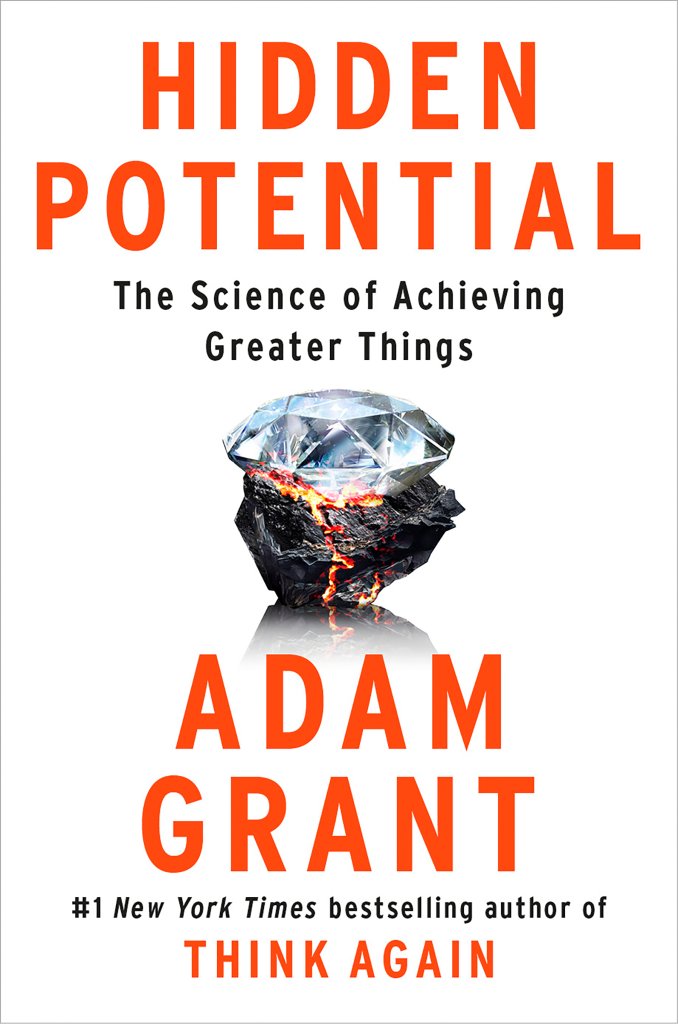The Overlooked Qualities That Signal Future Success—and How to Nurture Them
Bestselling author and psychologist Adam Grant on rethinking grade point averages and how we misjudge what drives potential.
A massive upset took place at the 1991 National Junior High Chess Championships. Dalton, a ritzy private school on the Upper East Side of Manhattan, was defeated by the Raging Rooks, a scrappy team from Harlem. “Unlike their adversaries,” writes Adam Grant, the Raging Rooks “didn’t have a decade of training or years of competition under their belts. Some of them had only learned the game in sixth grade.”
How did they exceed expectations? The Raging Rooks won against the defending champions because they had a coach who was skilled at spotting “potential where others had missed it,” Grant says, and who knew how to identify and nurture powerful character traits in his students.
In his latest book, Hidden Potential: The Science of Achieving Greater Things, Grant takes on the enduring myth that “greatness is mostly born—not made.” Leaning on cutting-edge social science and economic research, as well as case studies of artists, athletes, and public figures, he argues that there are millions of overlooked students—much like the Raging Rooks—and for the most part, we’re going about the business of motivating them to reach their potential all wrong.
Debunking the narrative that early academic prowess is the sole predictor of future success, Grant points instead to important intangible qualities that are vital for future career success—dispositions like discipline and determination and being proactive and prosocial. Developing these skills, he says, can’t happen in a vacuum. “You need the opportunity and motivation to nurture them.” Schools, for example, should be infusing play into the school day, challenging students to push through academic struggle and discomfort, and rethinking grading practices so they highlight not just performance but growth over time.
Grant, a Wharton professor of psychology and noted New York Times opinion columnist, is the author of influential bestsellers such as Think Again, Originals, and Option B, which he coauthored with Sheryl Sandberg. His books have sold millions of copies and have been translated into 35 languages, and his popular TED Talks have been viewed more than 30 million times.
In our discussion, Grant identified some of the constraints and misconceptions that prevent schools from implementing the best evidence-based practices and suggested steps that educators can take to cultivate kids’ potential in significant ways.
ANDREW BORYGA: Why do you think we’re missing so many kids with potential?
ADAM GRANT: Teachers are crunched for time and have a tremendous amount of pressure on them. They have tests and many other core responsibilities to fulfill.
Tapping into hidden potential requires getting to know students beyond the classroom, and teachers rarely have the time, space, and freedom to do that. In a landmark study, Benjamin Bloom looked at world-class artists, scientists, athletes, and musicians and found that in many cases, their early teachers and coaches didn’t see their potential. That’s because, in part, they only get a sliver of access to somebody’s capacity. If you only have a kid in one art class, for example, you don’t know that they have a real flair for sculpting.

Another issue is that we tend to misjudge what drives potential. We tend to think, almost entirely, about natural talent. We think the kids who stand out from the start are the ones who will reach the greatest heights. But motivation is a bigger factor in growth than raw ability. Unfortunately, the tools teachers have at their disposal assess talent and ability better than they assess motivation or some of the other character skills I write about in the book.
BORYGA: Certain “character skills,” according to research by Raj Chetty and colleagues that you examine in the book, are more important to future success than early math or reading skills. What are some of those intangible skills, and why are they so valuable?
GRANT: In the data, there are character skills that are as much as 2.4 times more accurate than math and reading standardized test scores at predicting adult income. These skills include being disciplined and determined and being focused and able to persist in the face of obstacles. Another important skill is being proactive about seeking out new knowledge as opposed to just reacting to what’s presented.
One of the most underappreciated character skills is being prosocial—forging strong relationships with peers and trying to help your peers learn. A lot of people think a good way to learn something is to seek out someone who is more knowledgeable than you and soak up all of their expertise. That’s not a bad strategy. But research makes the case that you’ll tap into deeper learning if you find someone who knows less than you and teach them what you’ve already learned.
Teachers inherently recognize the best way to learn something is to teach it because you understand it better once you’ve explained it. One way to build a character skill like being prosocial is to implement a jigsaw classroom, where you give students a common problem to solve or a project to do and make them each responsible for mastering a segment of the material and teaching it to the rest of the group.
If you teach kids to be interested in sharing what they’ve learned and create a classroom environment dedicated to every student enriching the knowledge of others, that’s just as good for the students doing the teaching as it is for the students doing the learning.
BORYGA: A lot of educators, understandably, want to avoid putting kids in uncomfortable situations. Why is it so important to “embrace, seek, and amplify discomfort” for learners, as you say?
GRANT: Lots of teachers have been taught that kids have different learning styles—that some are more visual, others are more verbal, others are more auditory. The idea is to replace one-size-fits-all education with something that’s tailored to each student’s style. The problem is we have decades of evidence which shows that while students may have a way that they like to learn, that style doesn’t predict how well they actually learn.
When something feels uncomfortable for a kid, teachers should recognize that the feeling of struggle is usually a sign students are in a position to grow. We should be challenging kids to stretch beyond their strengths and learn in ways that make them uncomfortable. Not only will that propel student growth, it will teach them not to take discomfort as a signal that they’re not naturally good at something.
BORYGA: Speaking of discomfort, civil dialogue and debate are clearly in decline. What role does disagreement play in the learning process, and why is it important for students to engage in civil debate over important issues and concepts?
GRANT: Most of us fall victim to what psychologists call the bias blind spot, which is to believe that other people are biased but that you’re objective. It’s the mother of all biases. Because if you don’t even recognize that you have biases, you can’t anticipate and correct them.
But other people can see your blind spots, and when you debate them, they can challenge you to sharpen your reasoning. Debate also fuels creativity. You don’t learn by affirming your beliefs. You learn by evolving your beliefs, and that happens when you confront people who believe different things.
Unfortunately, we’re living in a world where a lot of students are argument illiterate. A big part of education is learning to reason through ideas that are not intuitive to you. If classrooms are only designed for people to build on each other’s ideas and work toward a consensus, students don’t learn the skills of questioning their assumptions or rethinking their opinions.
BORYGA: How can teachers apply some of these insights in the classroom?
GRANT: Research shows that highly creative kids are less likely to be the teacher’s pet in school because they’re poking holes in the teacher’s lesson plan, and they’re arguing with the point teachers are trying to get across. They can be a little bit disruptive and difficult. But what they’re also doing is thinking independently. That defines their creative capacity and also builds their creative muscles.
Often, however, teachers won’t entertain these disagreements in front of the class. I think we should model this in front of the class and make it clear: We don’t agree, but we can still respect and learn from each other’s point of view. What you’re doing there is instead of teaching students what to think, you’re demonstrating how to think and how to disagree. That sets them up to start thinking for themselves. And that means they are more likely to have original ideas moving forward.
BORYGA: You write that perfectionism often stops students from making the progress they have the potential to make. What’s harmful about perfectionism, and what can teachers do about it?
GRANT: Perfectionism wreaks havoc on kids. Perfectionists do get better grades in school, but they don’t do better at work. And that’s in part because perfectionists are at risk of losing the forest in the trees. They focus on small details they can get right and often miss out on the big picture.
In school you can figure out what’s going to be on the test and master all the material. But in the real world, not only do you not know what’s on the test, there isn’t even a test. Perfectionists struggle in that situation. They tend to focus on the things they know they can ace, and that means they end up with a really narrow comfort zone. They’re not trying new things, and they’re constantly beating themselves up for tiny mistakes.
I think the lesson teachers need to instill in students is that you shouldn’t shame your past self, you should try to educate your future self. The value of your mistake is that you’re going to learn how to avoid that mistake and others like it in the future. And that’s a skill. It’s a character skill. It’s one we need to develop early and reinforce often.
BORYGA: Our audience of teachers are always interested in grading practices. You write that traditional grading methods often judge students based on past performance rather than tracking improvements over time. How can schools do a better job of measuring progress?
GRANT: I think the idea of a grade point trajectory, as opposed to a grade point average, is really powerful.
If you look at high school and how performance is a predictor of college success, freshman grades are almost irrelevant. Sophomore grades are a little bit predictive, and junior and senior year grades are much more consequential. But for the most part, we just use the average of all four years and collapse across that.
A student who has a B-plus average, consistently, year over year, is scored the same as one who started out getting B-minuses and ended up with As. But that second student has shown tremendous growth and demonstrates an ability to recover from early failure or struggle. And over time, those are the students we want to invest in because we can see their hidden potential in that trajectory.
We can grade students relative to their starting performance as opposed to just assessing where they land. This would help students, teachers, and parents get a map of what a kid’s progress looks like over time. This could also be a helpful antidote to the tendency to compare yourself to other people. We want students comparing themselves to their past selves more often and to their peers less often.
This interview has been edited for brevity, clarity, and flow.
